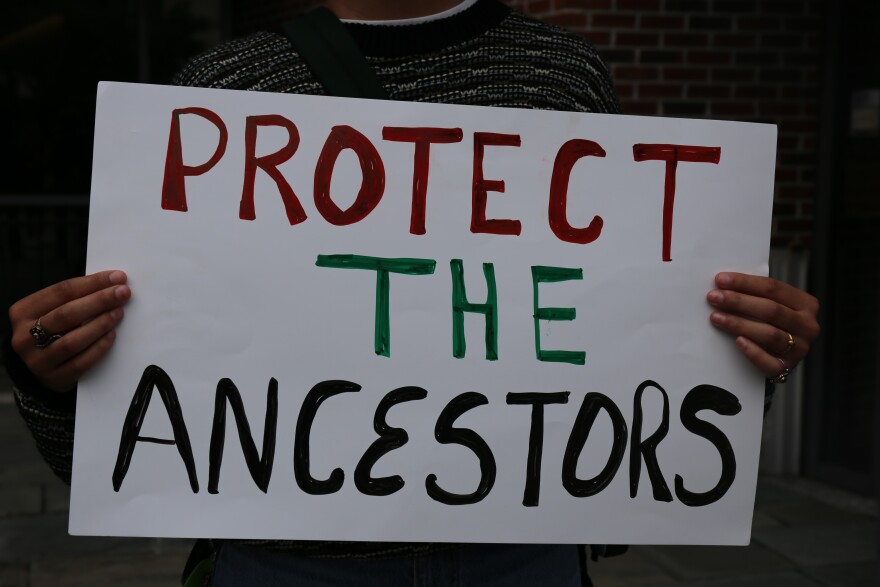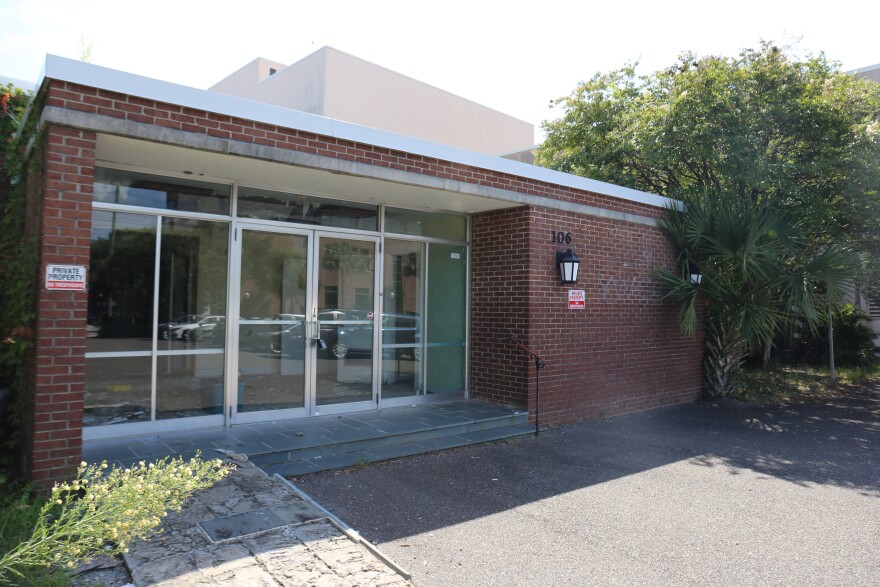As a student at the College of Charleston, preservationist Patricia Ploehn walked by the former Coming Street YWCA almost every day.
She knew its history as a sanctuary for Black women during the Civil Rights movement. But what she didn’t know, is that the site is also home to a 1790s, public burial ground for the poor.
She quickly learned when her Alma Mater announced plans to build a new dorm.
“I don’t think it makes them look good,” said Ploehn. “They purchased the property with the intention of constructing a dorm on top of it.”
Student Housing
The college says it desperately needs more student housing. Some 12,000 students scrambled to find a place to live this year on a peninsula that’s average rent is $2500 a month.
“Right now, we can offer housing to about a third of our students,” said College of Charleston Chief of Staff Paul Patrick.
Patrick says the school did consider several sites before purchasing the property in January for $75 million. None, he says, provided enough density or was affordable.

A burial ground for the poor
But the college’s own research shows the old cemetery is where the city’s poor were buried, as many as 12 thousand people, between 1794 and 1807. They likely include strangers, immigrants, orphans, free and enslaved Africans.
Their remains could hold untold history says Preservation Society of Charleston President Brian Turner. He points out, the public cemetery quickly filled between 1804 and 1807, just before the importation of Africans was prohibited in 1808.
“What was happening in Charleston in those pivotal years was really a mad dash to import as many Africans as possible,” said Turner.
By then, so many bodies of Africans who'd died during the transatlantic journey had washed ashore, slave ships were forbidden from throwing them overboard. Turner says, they too, were likely interred at the site, as well as Africans who died shortly after arrival.
Much of the college commissioned research was done before the school purchased the land.
“They have known of those bodies much longer than they told the community," said Dr. Millicent Brown. “That’s a more heinous kind of disrespect.”
Protect and Respect the Bodies
As a teenager, Brown was on the front lines of desegregating Charleston County public schools. Today, she doesn’t want a single body moved from the historic cemetery.
But that’s what the college plans to do, exhume remains if found.
“How did it end up purchasing a burial ground and have no plans on preserving it,” said 25-year-old James Njonjo.
Njonjo and others, like Dr. Brown, have put together a coalition called, “Protect and Respect the Bodies”. The group waved signs in protest as the college held a public meeting last month, sharing its plans for opening a new dorm on the site by 2028.

“It is our moral responsibility to take care of our ancestors, all of them, no matter who they are,” said Lasheia Oubre.
Oubre was part of the Anson Street African Burial Ground Project which helped honor the remains of 36 people of African descent who were discovered in 2013 while the Charleston Gaillard Center was being built.
She and other members of “Protect and Respect the Bodies” want the city to get involved.
As for the college, Patrick says it is committed to commemorating both the cemetery and the YWCA. He says if remains are found, they will be treated with respect. But he can’t say where they would be re-interred or if DNA would be used. He insists the school will know more once it digs. The YWCA will be demolished next month.
So, is there anything the school could find that would change its mind?
“I don’t know that I ever want to talk in absolutes, but we certainly remain committed to a residence hall project at this site,” said Patrick.

Lessons learned from NY
James Newhard is an archeologist who teaches at the college. He hopes the school will learn from the site and restore dignity to people who were treated less than.
“We have an opportunity here to provide personhood and return personhood to the individuals interred,” said Newhard.
Newhard says the site reminds him of New York’s African Burial Ground, the oldest and largest known excavated burial ground of free and enslaved Africans in the nation.
It's where the discovery of mass graves during the 1990s halted a federal building project and inspired a national monument.
“What New York went through was painful, difficult and expensive,” said Dr. Michael Blakey who led a team that studied remains.
The experience, he says, was also educational.
“Informed consent is the fundamental, ethical principle that should apply to the treatment of human remains.”
Blakey says descendent families should be informed and have a say about remains, as should anyone who cares, including a community.
The College will hold its next public meeting about student housing Sept. 22, from 6-7:30 p.m. at the School of Natural and Environmental Sciences.



